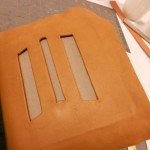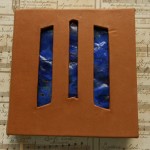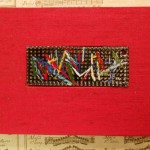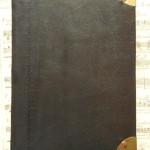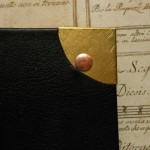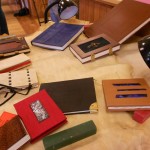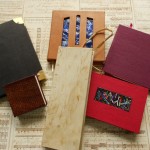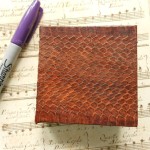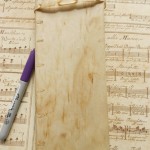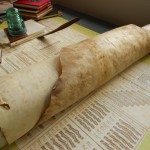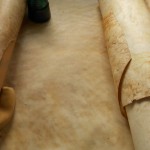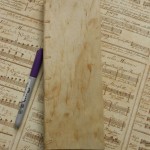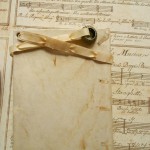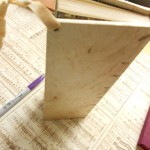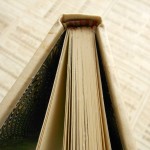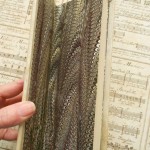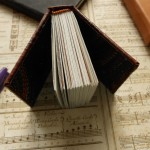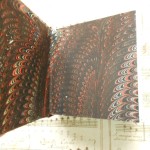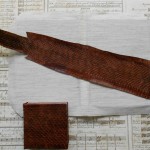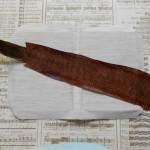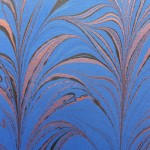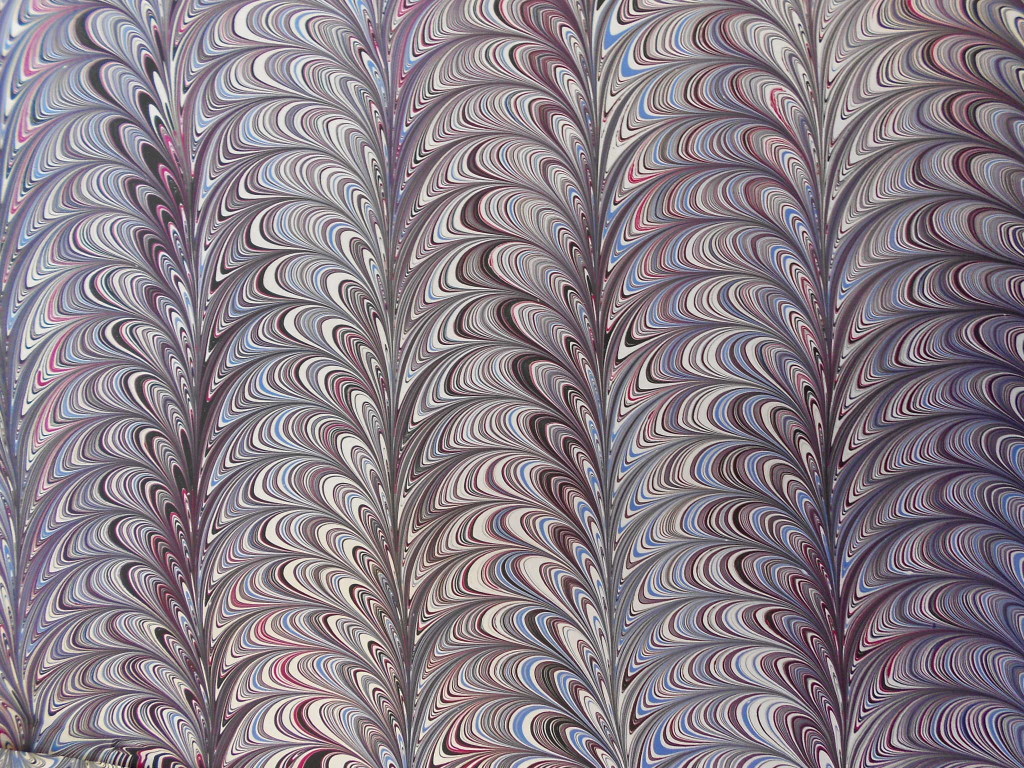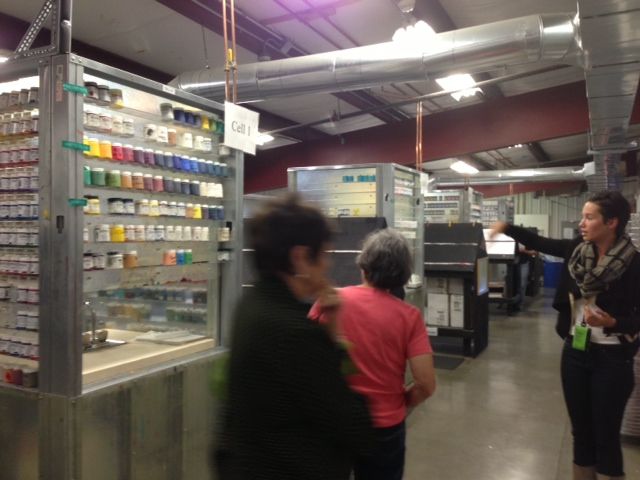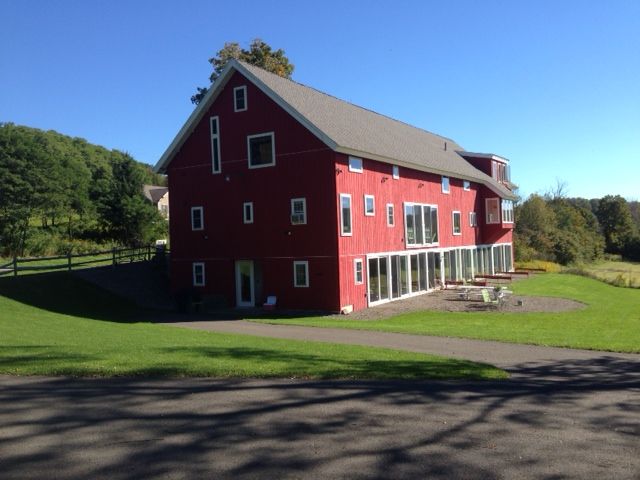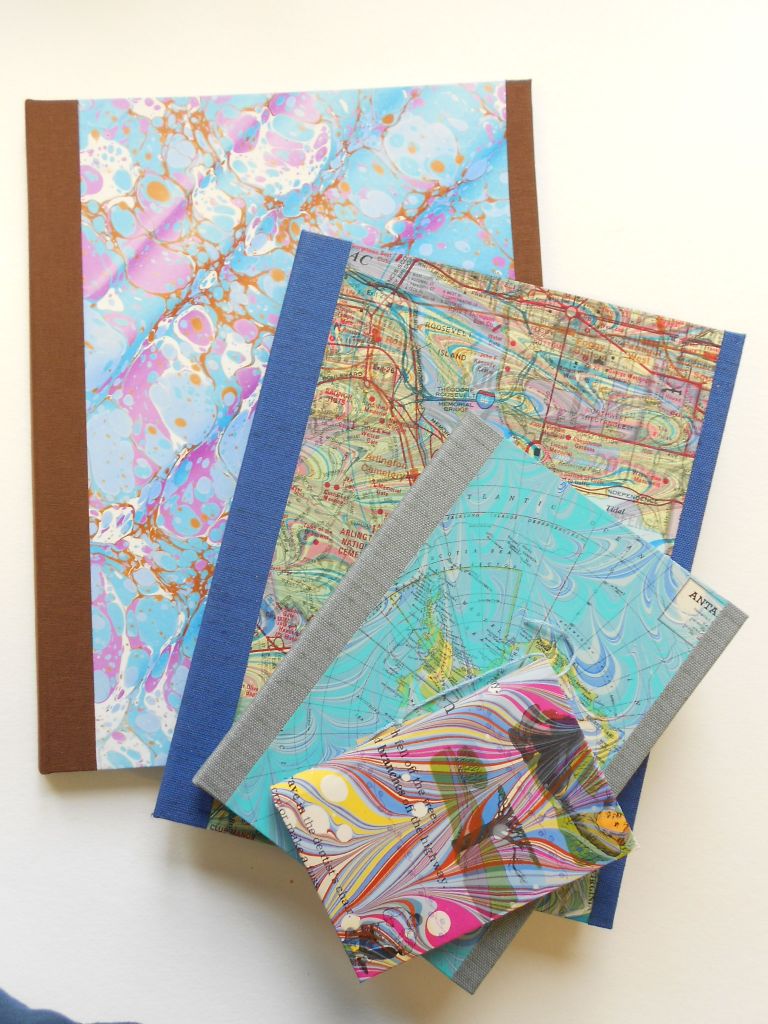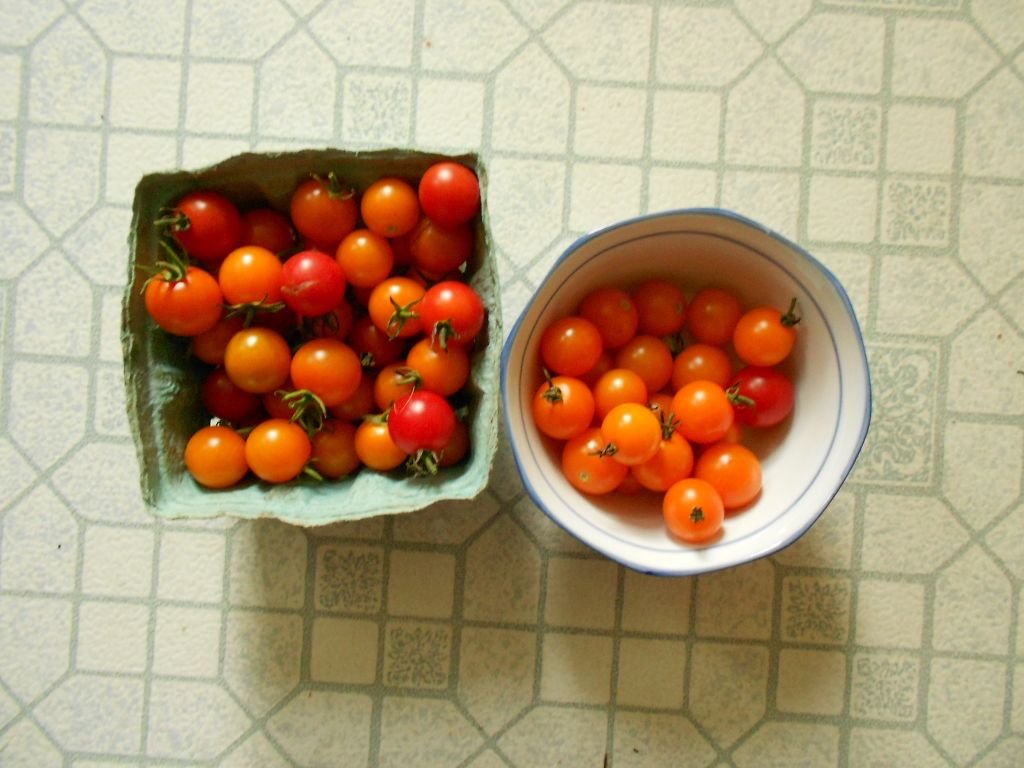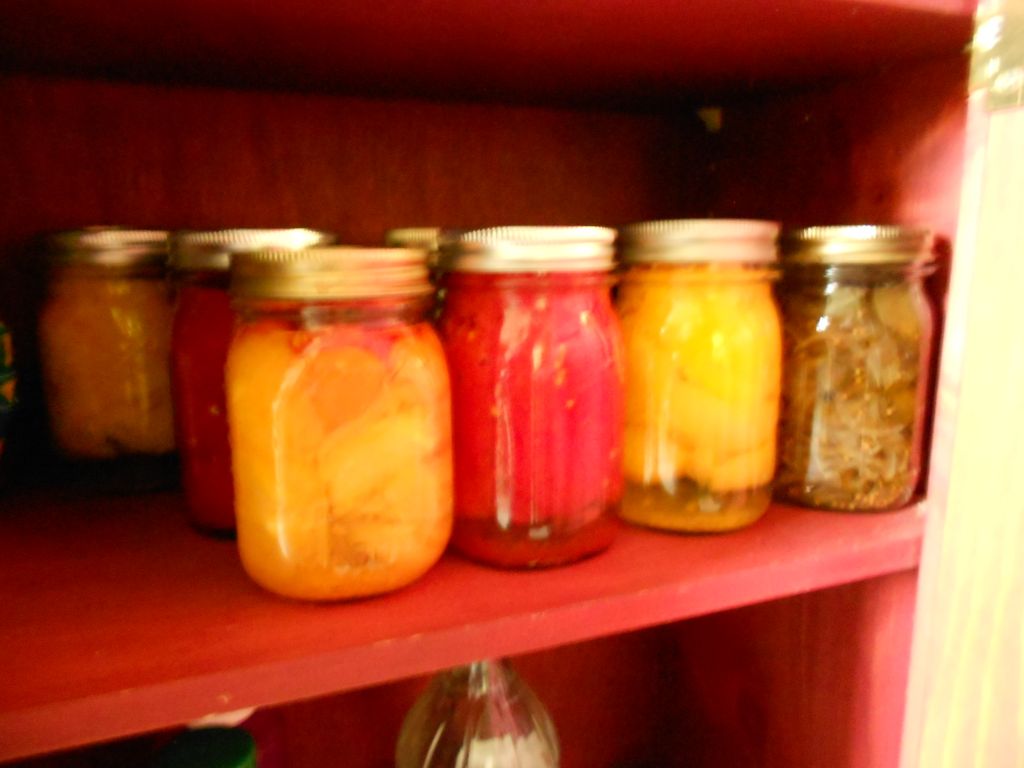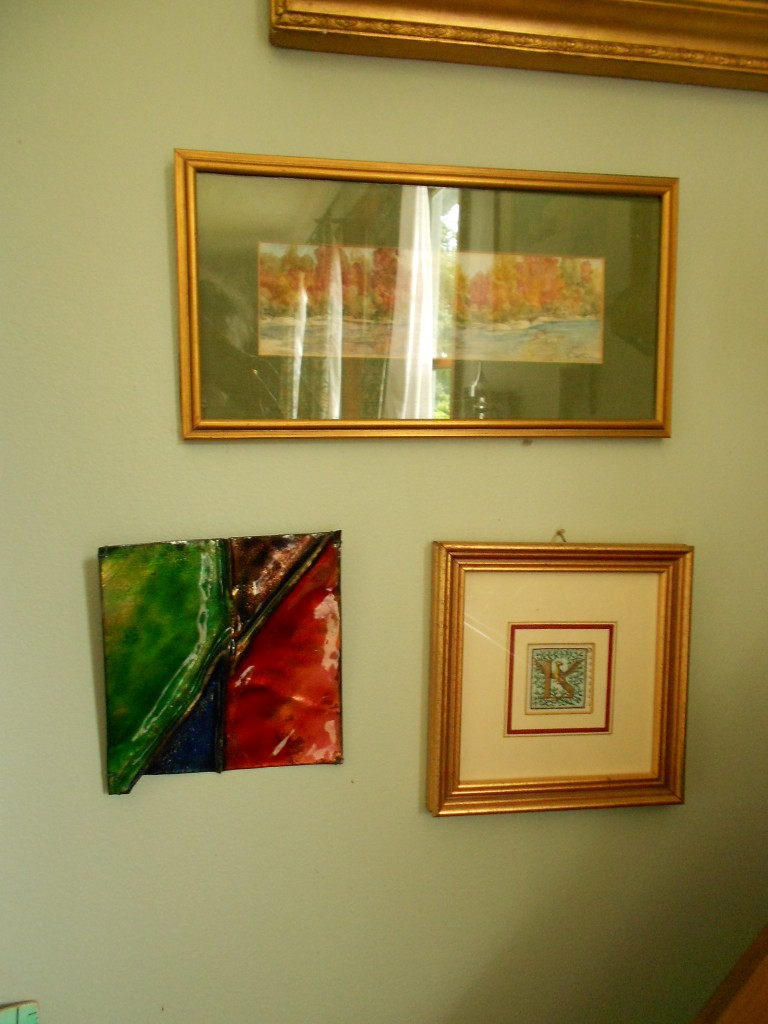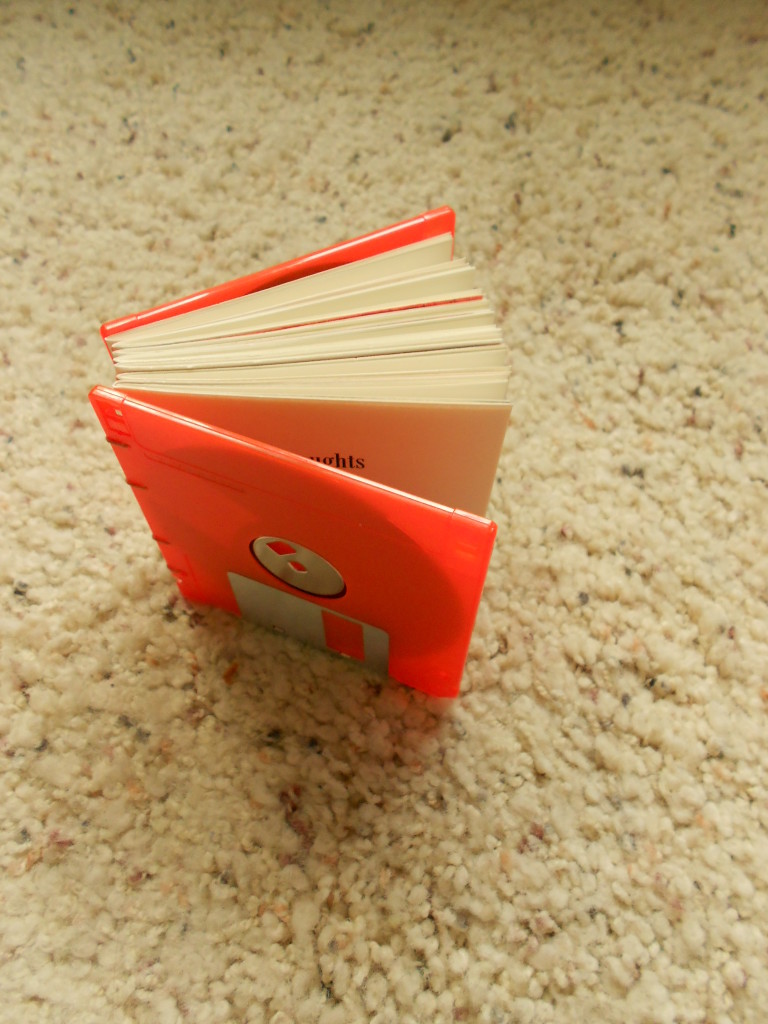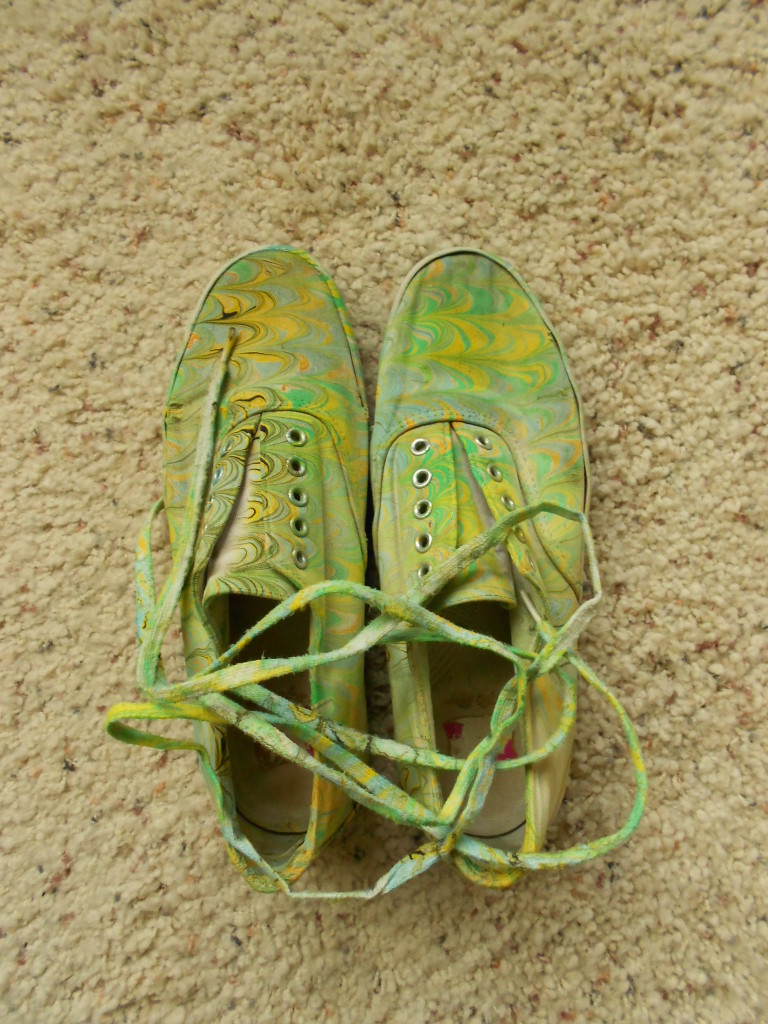Finally, back to my books from the Folk School. My first two books are shown here. I have always said that I don’t work in leather. It’s too fussy, too expensive and too time consuming. This week I ended up four leather bound books! The most complicated is a variation on a traditional Gothic structure. I cheated and used a textblock sewn over tapes rather than lacing in the boards, so it is more like a cased rather than a bound book.
Many important Gothic and Victorian psuedo-Gothic books were made with double boards, allowing many different types of ornamentation. While thinking about what I could do with double boards, the idea of windows kept running through my mind. I had a piece of very thin copper that I had tried to torch fire. It didn’t come out very well. It was bumpy and uneven and generally a bit of a mess. I had no idea if it would just crack when placed between the boards. I was able to trim the copper to a suitable size, so the first problem was overcome. Here are some photos of the process.
Fortunately, the enamel hasn’t cracked and the bumpiness gives an interesting texture to the piece.
The other book I made with an enameled piece was an easy one. I used the same technique I had used before with coins. I cut a recess in the top board, tucking the bookcloth into the recess and glued the piece in place. I used this same technique with a black cloth book after I returned.
- Cloth with enameled inset
The last technique we used was working with metal – brass, copper, bronze and pewter – as corners, bosses and latches. This was the first time I had ever worked with metal and was a bit of a challenge. Metal has to be exact. You can’t nudge it, pinch it or approximate. I’d love to have more time to work with metal and hope I can in the coming year. For this time I just made some brass corners. Not much for a metal worker, but exciting for me. There’s a lip that fits around the edges of the boards and then the corner is fastened to the boards with a rivet. I also gave a brass a bit of texture. As a final touch, this book has a line of blind tooling parallel to the spine.
- Leather bound with brass corners
- Corner, showing texture & rivet
- Blind tooling
- Finished book
So that finishes all five books I made during my week. Since I’ve been home, I’ve been finishing up odds and ends, trying to put together stock for the shopping season.
You can always find my books and paper on Etsy via my page or by going to www.Etsy.com/shop/LosingHerMarbles





